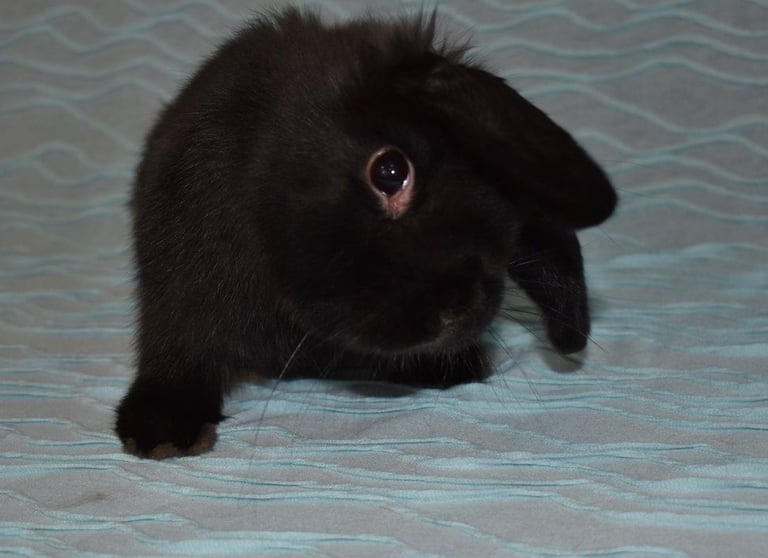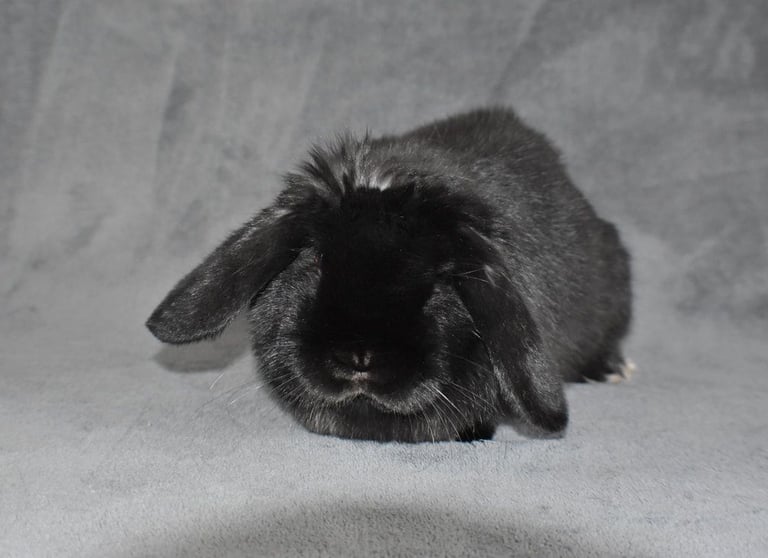E. Cuniculi Experiences at Hot Cross Buns
How E. Cuniculi has been recognized and treated at Hot Cross Buns
Amy J. - "Big Bunny" at HCB
2/19/20247 min read


Into every rabbit breeder's life a little rain must fall. Does fail to conceive, litters are lost, a beloved Bun may develop GI Stasis. With life comes death and illness. E. Cuniculi is an parasite that can cause health issues and even death in rabbits of any breed. As I researched the causes, treatments, and ways this problem is spread, I realized how much more we need to learn in order to care for our beloved Buns.
What is E. Cuniculi?
E. Cuniculi is short for Encephalitozoon cuniculi. Put simply, it is a parasite that infects approximately 40-80% of all domestic rabbits, but lies dormant (and the rabbit is not contagious) most of the time. A rabbit can be exposed to it and carry it within its body all its life, but unless it becomes an active infection and moves into the nervous tissue, the rabbit will not exhibit any symptoms. A blood test can be used to determine if the rabbit was ever exposed to e. cuniculi at some point in its life, but it will not tell us if the rabbit is fighting off an active infection or not, and the blood test itself is not always accurate.
What happens to a rabbit with an active E. Cuniculi infection?
From the reading I have done, the parasite infection can move to the eyes, causing blindness or, more commonly, attack the nervous tissue and cause paralysis, seizures, and/or head tilt (wry neck). If left untreated, the rabbit may die.
How is e. cuniculi spread?
In most cases, e. cuniculi is spread from mother to babies through the placenta. A breeder may have an apparently healthy mother lose a litter of kits that failed to thrive, or have kits die, one by one over a course of time (usually between 4-7 weeks of age). A kit may suddenly develop wry neck close to weaning age. These are all heart-breaking things I have experienced in my own rabbitry. Although the kits that we had necropsied did not show signs of e. cuniculi, their mother later tested positive for the parasite.
E. cuniculi spores are shed through the urine of the rabbit, so any contact with an infected rabbit can lead to the infection of another rabbit. This is why we clean and disinfect our exercise pens thoroughly between each use and have stopped allowing bunnies from different litters to play with each other. If one litter is infected, we want to keep it from spreading to a different litter.
The parasite itself seems to be active for approximately three months after infection, during which time symptoms may develop. A rabbit may suddenly begin drinking more water than normal. This is a good thing because the rabbit is trying to shed the parasite out of its body. Usually after three months, the parasite appears to become dormant. There are some rabbits, however, who do shed e. cuniculi spores throughout their lifetime.
How do you know when your rabbit has e. cuniculi?
A strong, healthy rabbit with access to fresh water and a good diet usually does not exhibit any symptom of carrying the parasite at all. According to a study done in the United Kingdom (where much more research on rabbits and their care has been conducted) only 6% of pet rabbits ever develop symptoms, while 52% are infected with the parasite.) (This article is linked below.)
As a breeder, I have lost one entire litter of four kits, (and lost four out of seven kits from the same doe). They were developmentally on target, playful, and well-fed. One day the smallest kit became lethargic. We tried syringe feeding, but it died the following day. A few days later, a second kit suddenly stopped eating and failed. We took the last two kits to the vet, who could find nothing wrong with them. They were reportedly in excellent health and were gaining weight at an appropriate rate. Within two weeks, they were both dead. We had them necropsied and nothing definitive was found, but e. cuniculi was suggested as a possibility. Their mother had been tested but the test was negative, although she tested positive about 4 months later. She never had symptoms of the parasite, and is still very healthy. She was spayed and is living the high life as a pampered pet.
I have had three kits develop wry neck (or head tilt) during my past seven years as a Holland Lop breeder. Oddly enough, all three were does, although that is most likely coincidental. We have successfully treated two of them, and the third is coming along nicely, albeit more slowly than the first two, but we hope to find her a pet home very soon.
The first Bun came from a litter of seven, from a believed to be healthy mother and father. Both parents were true dwarf Hollands, and two of the seven kits born were peanuts, dying shortly after birth. Two kits gradually wasted away, believed to be not strong enough to compete for milk from their stronger litter mates. The remaining three kits, two bucks and a doe, grew to be strong and healthy. Shortly before weaning at seven weeks, the doe developed head tilt. She could not eat, was obviously very dizzy and disoriented, and would "roll" to her back each time she was lifted off the ground. She was taken to a very reputable rabbit veterinarian immediately, who prescribed a 10 day course of Baytril and a 30 day course of Safe Guard goat wormer. We also gave her Bonine chewable motion sickness tablets (1/4 tablet) and Bene-Bac. She was syringe fed baby food pumpkin twice per day (which she loved!) Within a week, she had stopped rolling and was able to find her way to the food bowl, but we did continue with the pumpkin for the extra nutrients. Although she was of weaning age, we decided to leave her with her mother, as the two has always had a very close bond. I credit her mother's tender loving care with the speedy recovery of our first rabbit with wry neck caused by e. cuniculi. She continues to live with us and is a beloved member of the family. She has never shown further symptoms of parasite infection to date.
The second Bun, unrelated to the first, was born approximately one year later to a false dwarf mother and true dwarf father, in a litter of four kits. One kit died within 24 hours of birth. The kit that contracted wry neck was approximately 5 weeks old, so considerably younger than the first kit. Her litter mates were both strong and healthy, but the affected kit had always been tiny. We had intervened with syringe feeding and trips to the vet prior to the development of wry neck. Her weight gain increased and, when she developed wry neck, it was a mild case, treated only with Baytril and Safe Guard goat wormer. She showed significant improvement within days and remained with her mother for another two months. We eventually separated them and continued to keep the affected kit until she was nearly five months of age, at which time she was placed in a pet home and spayed. She continues to thrive.
The third kit, also unrelated to the previous two, was born approximately 5 months ago, to Mango (a second time mother who had, most likely been exposed to e. cuniculi through spores shed in urine when fostering kits from the aforementioned doe who lost a total of eight kits in two litters. We believed the litter of seven was too large for her, so fostered three kits to Mango. Although she took excellent care of her fostered babies, Mango was only able to keep her own kit and one other alive.) Mango's second litter produced two doe kits. Both were large and healthy looking. The first was placed in a pet home and the second, Blackberry, suddenly developed wry neck. We began with the usual treatment of Baytril and Safe Guard. A month went by with worsening symptoms, rather than the improvement we had been expecting. She began rolling during the second month of treatment. We tried again with another new bottle of Safe Guard, but each day she became weaker and weaker. I began praying for a merciful end to her suffering while I researched different treatments. I finally stumbled upon some information that helped. This article proved to be a game changer in Blackberry's life. https://barbibrownsbunnies.com/wryneck/
After reading this information, I felt better prepared to treat Blackberry in a different way. I gave her the recommended doses of Ivomec and then started feeding her heavily twice a day. Within a week we saw the first glimmer of improvement. We had given her a food bowl that sat on the floor of her cage, rather than using the hanging stainless bowl that she had grown up with, to make it easier for her to eat. And eat she did. She was ravenous and started stretching her head towards the hanging food bowl in her cage, looking for more. I started filling both bowls twice a day, and she was able to clean them out every time. In time, she stopped rolling when we picked her up. She filled out, became stronger, and has developed a beautiful, glossy coat. She still has a slight tilt to her head, but is often able to hold her head perfectly normally when she has some neck massage and playtime to distract her. I think the tilt she currently displays is more the result of habit than any actual issues with her head and neck. Blackberry is pictured above and below.
My observations...
*I believe the first line of defense in helping a rabbit with e. cuniculi recovery is food and lots of it, Our first rabbit recovered fairly quickly because she was receiving pumpkin via syringe, as well as her mother's milk during her treatment. The second rabbit recovered very quickly as she had already been receiving supplemental feedings due to her size. Blackberry began to recover only when we gave her additional food.
*Adding Apple Cider Vinegar to drinking water is an easy way to encourage rabbits to drink more fluids and flush the e.cuniculi spores out of their bodies more quickly. I add about 1 Tablespoon per 32 oz. bottle of water.
*Ivomec, Baytril (needs a prescription), Safe Guard, Bonine, Bene-Bac, pumpkin, and syringes should be in every rabbit breeder's medical supplies so treatment can begin as quickly as possible.
*Given that conventional wisdom stated 40-80% of all domesticated rabbits carry e. cuniculi, I think it's safer to assume that all rabbits have been exposed to the parasite and to treat them as though they are carriers. I believe the actual number is on the higher end of the spectrum.
*There is still so much to learn about e. cuniculi and other rabbit diseases and ailments. My limited experience has been solely with young rabbits and never adults who developed symptoms in later life. I have never had a rabbit that became blind, developed paralysis, or had seizures as a result of e. cuniculi infection, so I am unable to add any insight to these aspects of care and treatment.
*As always, your rabbit knowledgeable veterinarian should be the first person to consult when you believe something is wrong with your beloved bunny.
Additional resources:
https://www.vets-now.com/pet-care-advice/e-cuniculi-in-rabbits/
https://rabbit.org/encephalitozoon-cuniculi/
https://www.petcarevb.com/rabbit-veterinarian/rabbit-e-cuniculi.php


